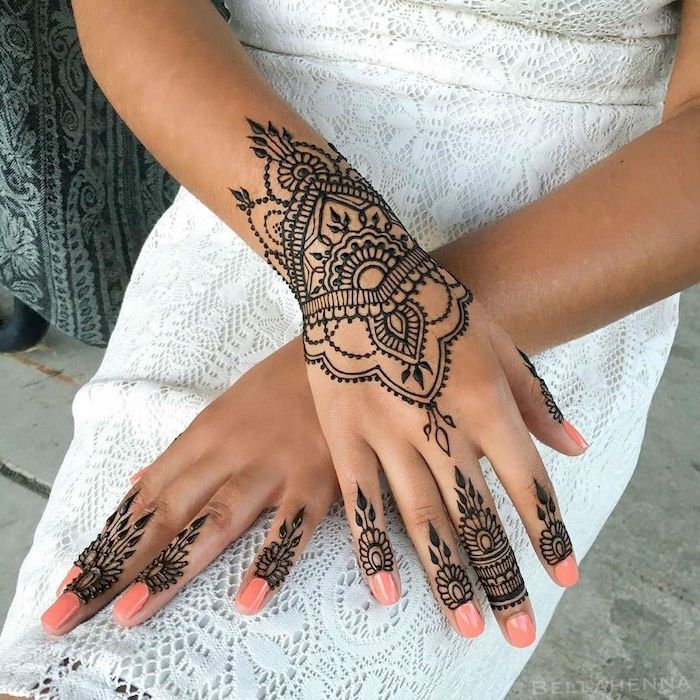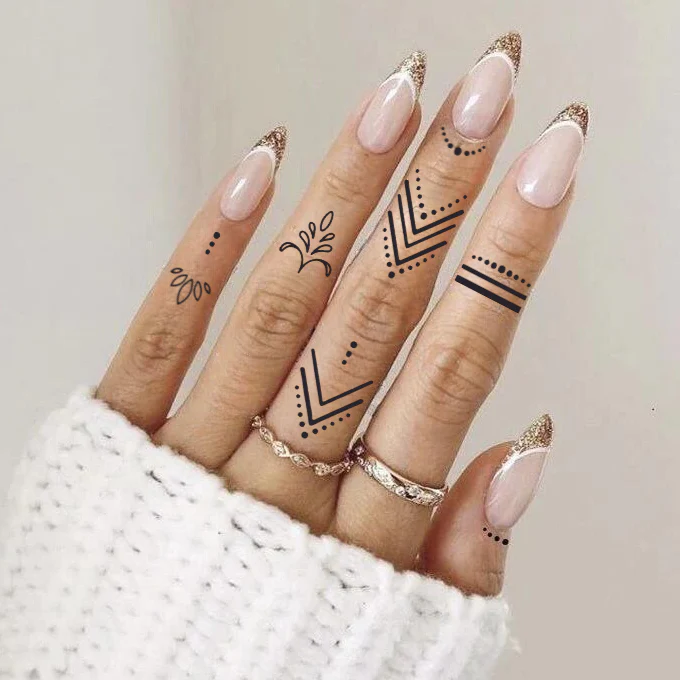
Cultural Beauty: Henna Tattoo Traditions Unveiled
Introduction to Henna Tattoos
Welcome to the vibrant world of henna tattoo, a tradition steeped in history and embraced globally. In this blog, we will explore the fascinating aspects of this ancient body art, from its origins to modern-day popularity. Discover why henna has captivated the hearts of many and how it continues to be a captivating form of cultural expression.
What is Henna?
Henna, known scientifically as ‘Lawsonia inermis,’ is a plant-derived dye. It is celebrated for leaving a temporary, rich brownish-red stain on the skin, creating beautiful patterns. This natural dye has found a special place in various cultural ceremonies, and its use extends beyond just body art.
The Cultural Significance of Henna Tattoos
Henna tattoos are not mere decorations. They hold profound cultural significance in many communities. Traditionally linked to joyous celebrations like weddings and festivals, henna is deeply rooted in ritual and symbolism. It’s seen as a way to bring good fortune and blessings to those who wear it.
Henna Tattoo and Its Global Popularity
The allure of henna tattoo crosses borders, appealing to diverse groups around the world. Dotingly adopted across continents, the art of henna tattooing has grown into a global phenomenon, recognized for its intricate beauty and non-permanent nature, which allows frequent changes in body art preferences.

The Process of Creating Henna Tattoos
Henna tattoos embody a rich tradition and creating one is an art in itself. Here’s how they come to life, from preparation to application, and eventually, removal.
Preparing the Henna Mixture
To start, you need pure henna powder. Blend the henna with a liquid, like water or lemon juice, to form a paste. Some add essential oils for a richer color and aroma. The consistency should be smooth for easy application.
Applying Henna Tattoos
Once your henna paste is ready, it’s time for the fun part. Fill a cone with the paste and snip off the tip. Now, draw your chosen design onto clean skin. Take care to be gentle and steady as you create your design. The henna needs to dry for at least half an hour to impart its color well.
How Long Do Henna Tattoos Last?
Typically, a henna tattoo fades in 1 to 3 weeks. Its lifespan relies on where it’s applied and how often that skin area is washed and rubbed. Moisturize the area, but avoid water for the first few hours to extend the tattoo’s life.
Removal of Henna Tattoos
Henna tattoos naturally fade over time, but if you want to remove them quicker, gentle exfoliation works. A scrub or lemon juice can help fade the color. However, be careful; avoid harsh scrubbing to prevent skin irritation.
The Art and Design of Henna Tattoos
The art of henna tattoos reflects rich heritage and creativity. Each design holds meaning and connects to tradition. Over the years, this art has adapted, blending traditional motifs with modern tastes.
Traditional Versus Modern Henna Designs
Traditional henna designs are intricate, with patterns like paisleys, flowers, and dots. They often represent blessings and joy. Modern designs are more varied, incorporating elements like geometric shapes or words. Artists today bring together old and new styles to create unique pieces.
Placement and Meanings of Henna Tattoos
Henna tattoos are commonly placed on hands, arms, and feet. Each area can signify different things. For example, henna on the palms may symbolize blessings, while on the feet it can represent a foundation or connection to the earth. Placement can also reflect personal preference.
Hidden Meanings and Bride’s Traditions
In weddings, particularly in South Asian cultures, brides have elaborate henna with hidden meanings. Designs may include the groom’s initials or symbols of love and prosperity. Finding these hidden details is a wedding tradition, believed to bring good luck to the couple.

Health and Safety Considerations
When embracing the beauty of henna tattoos, it’s crucial to consider health and safety. Here we’ll delve into the important facets of selecting safe henna products and ensuring proper aftercare.
Choosing Natural Brown vs Black Henna
Natural brown henna, derived from the Lawsonia inermis plant, is the safe choice for tattoos. It offers a rich, earthy color without harming the skin. Conversely, black henna often contains chemicals like PPD, which can trigger allergic reactions and should be avoided. Always opt for natural brown henna to ensure your skin’s safety.
Potential Risks of Chemical Additives
Some henna mixtures include additives to intensify the color or prolong the tattoo’s life. However, these chemicals, especially in black henna, pose risks such as skin irritation or severe allergic reactions. Prioritize using pure henna powder to eliminate these dangers.
Aftercare for Henna Tattoos
After applying a henna tattoo, caring for it properly can extend its beauty and prevent skin issues. Keep the tattooed area moisturized and avoid water for a few hours post-application. If you wish to remove the tattoo sooner, gentle exfoliation with a scrub or lemon juice can help fade the stain. Remember, aggressive removal techniques can damage the skin, so proceed with caution.

DIY Henna Tattoos at Home
Creating your own henna tattoos at home is not only fun but also incredibly personal. With a few simple ingredients and tools, you can start this creative journey. Let’s dive into how you can mix your paste, apply it, and ensure phenomenal results.
Making Your Own Henna Paste
To make henna paste, first, source high-quality natural henna powder. Avoid powders that have additives or dyes, as these can harm the skin. Mix three tablespoons of henna powder with water, and add a few drops of eucalyptus or tea tree oil, to enhance the color and consistency. Stir until the mixture is smooth without lumps.
Step-by-Step Guide to Applying Henna
Once your paste is ready, fill a plastic cone or a small bottle with a fine tip. Begin by cleaning the skin where you’ll apply the tattoo; this ensures the henna adheres well. Start with simple designs and gradually work your way to more complex patterns.
- Hold the cone firmly and apply gentle pressure.
- Trace the design slowly, allowing the henna to release evenly.
- Let the henna dry for at least an hour; the longer it stays, the darker the stain.
- After it dries, scrape off the dried paste.
Tips for Achieving Best Results
For vibrant and lasting henna tattoos, follow these tips:
- Keep the skin free from oils before application.
- After applying, avoid water contact on the henna area for at least 12 hours.
- Moisturize the area with natural oils after removing the dried henna; it helps deepen the stain.
- Store leftover paste in the refrigerator for up to a week for reuse.
With practice, the process becomes more straightforward, allowing you to create beautiful, custom designs that signify personal meaning or simply add a decorative touch to your look.

The Future of Henna Tattoos
The future of henna tattoos continues evolving. As society changes, so do preferences and techniques. This body art form integrates into contemporary culture, attracting new audiences.
Modern artists often explore innovative styles. They merge traditional designs with contemporary aesthetics. This fusion creates fresh, unique art forms while respecting heritage. Younger generations embrace this evolution, leading to new interpretations of henna tattoos.
Digital technology also plays a role in shaping the future. Artists now use digital platforms for showcasing their work. Social media provides avenues for sharing creativity. This exposure broadens audiences and inspires collaboration between artists worldwide.
Moreover, the demand for henna tattoos continues to rise. More people seek temporary body art options for various occasions. Whether it’s festivals, parties, or personal moments, henna offers an accessible solution.
Education surrounding henna is also expanding. Workshops and online classes teach techniques and traditions. This growing interest fosters a deeper appreciation for this ancient art form. Knowledge empowers artists to create meaningful and culturally significant designs.

Conclusion
As we reach the end of our journey into the world of henna tattoo, it’s clear that this ancient art form is more than just skin deep. It carries with it a deep cultural significance and a beauty that transcends time and borders. Whether you’re drawn to henna for its aesthetic charm or its historical roots, incorporating this tradition into your life adds a touch of cultural richness.
Embracing the Beauty of Henna Tattoos
Henna tattoos offer a unique way to express yourself. They provide a temporary but powerful statement of beauty, creativity, and identity. With their rich color and intricate designs, they invite us to explore the stories and traditions they represent. Safe, accessible, and customizable, henna tattoos encourage us to embrace the beauty of art on our own terms.
The Tradition and Cultural Appreciation
While we enjoy henna as an art form, it’s important to remember and respect the cultural heritage it carries. Through henna, we can appreciate the traditions and celebrations of others. It’s a way to connect with the past while creating new memories. As we appreciate henna tattoos, let’s do so with respect for the cultures that have nurtured this practice for centuries.

